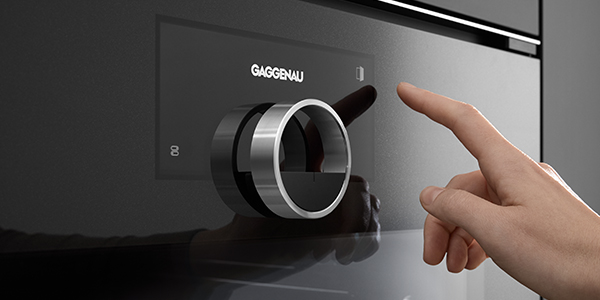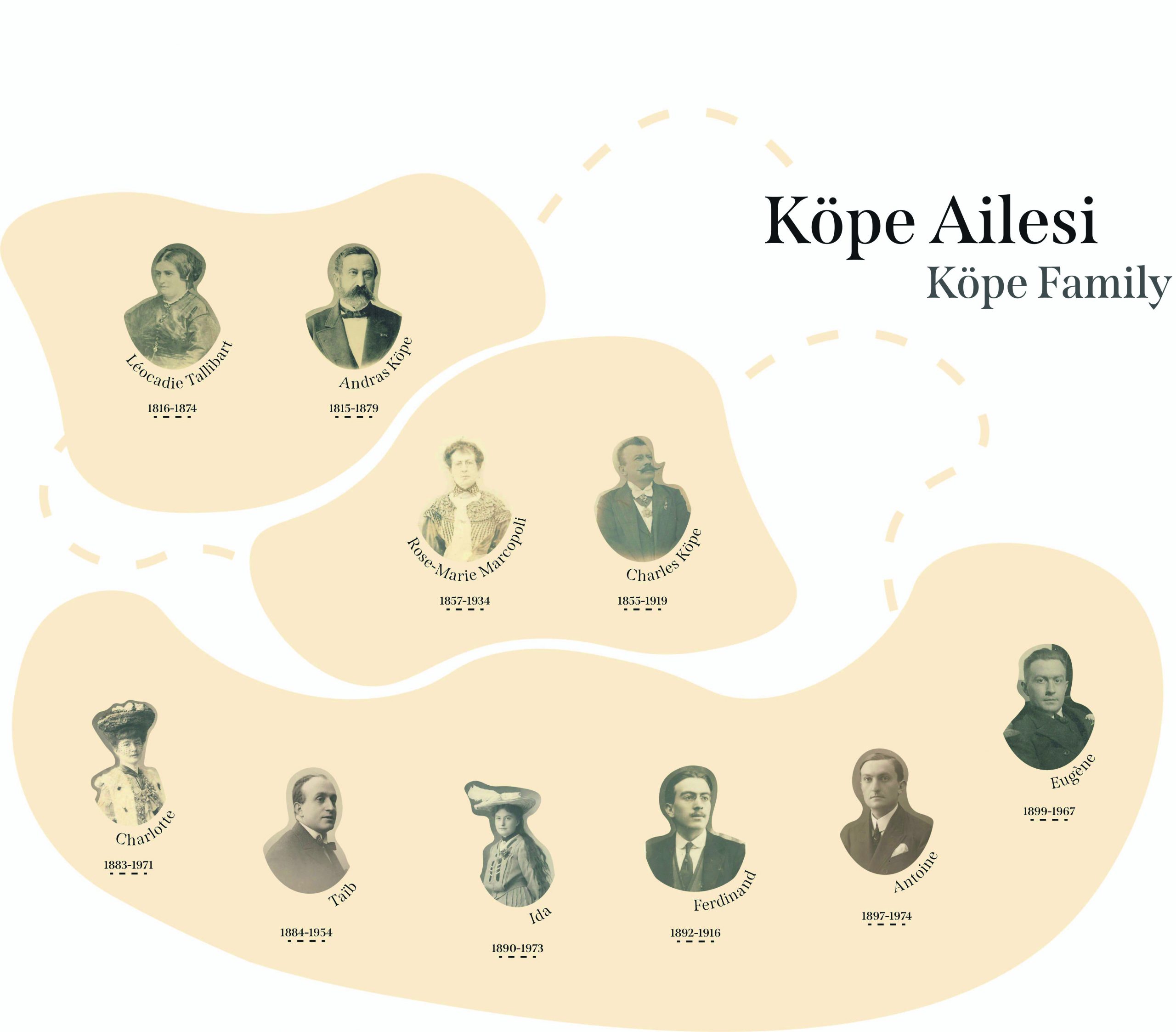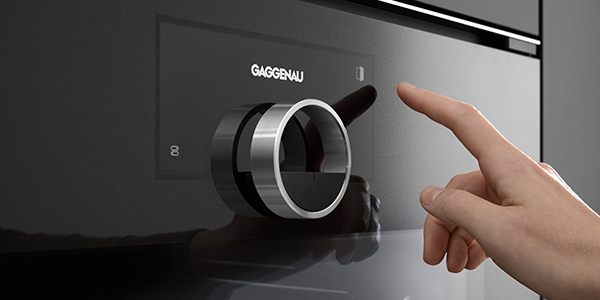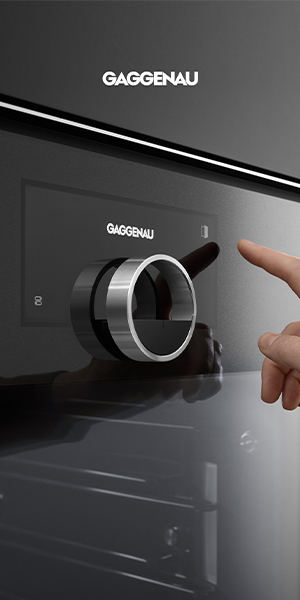Since national lockdowns started in mid-March, global economies have slowed to a great extent. The art world has been hit even harder, as it is a market based on social interactions and networks. The trend of falling market values correlates with economic recessions, as it did in 2008, when sales were down by over 30%. All of the market participants have been affected by this pandemic to varying degrees. So far, one observation is clear, the novel coronavirus (COVID-19) could be a catalyst to finally ignite a strong flame for the online art market. The art industry, which relies considerably on the human interaction between art dealers, artists, and members of the public, must rethink its practices. With social distancing, the way art is seen and bought has changed, along with many other things. Crowded art fairs and gallery openings are no longer a part of the program. Dealers have had to find new ways to create continuous hype to make collectors buy now. The unexpected and unprecedented bans on travel and transportation during the shutdown have presented these players with new challenges.
The art market has been mostly resistant to events in the wider economic and political environment due to its peculiar working dynamics. However, the unpredictable pandemic has left the art market with serious challenges. In 2019, the art market achieved $64.1 billion in sales, a 5% decline from $67.7 billion the previous year. With uncertainty in politics and economics overall, art sales have been under pressure.
Galleries
As the COVID-19 pandemic spread, it caused many galleries to close their physical spaces. Almost all art fairs and other events were cancelled around the world. Some galleries have already closed permanently, others have furloughed or laid off significant numbers of employees, and the effect on those that remain open is still unfolding. The aggregate outcomes for the sector in 2020 will depend on how long the various phases of this crisis last. Despite already having very tight employment structures, many galleries have had to furlough or permanently lay off staff in response to the COVID-19 crisis.
“The art industry, which relies considerably on the human interaction between art dealers, artists, and members of the public, must rethink its practices.”
Art Basel published a report in September of 2020, based on a survey of 795 modern and contemporary galleries in over 60 countries and regions. Each gallery reported how the pandemic has affected their businesses and sales. According to the report, galleries with a turnover between $250,000 and $500,000 a year, which represent 13 per cent of those surveyed, had the largest share of downsizing (38 per cent) as well as the greatest fall in total sales (47 per cent). One third of those surveyed were forced to cut their staff. This equated to an average of four job losses out of a staff of eight (permanent and part-time employees) during that period. Only two per cent of galleries reported having to close completely. Nearly all galleries (93%) closed their premises between January and July 1 of 2020, with an average closure period of 10 weeks. The shortest closures were in small and medium sized markets, with South Korea and Sweden reporting the lowest average in five weeks. The longest average gallery closure was in the US, with an average of 14 weeks.
The report finds a median decline in sales values of 43 per cent for the period, a relevant measure in such a fragmented industry. The gallery industry model is based fundamentally on discretionary spending and in-person contact. In short time, it had to change its business practices to adapt to the pandemic.
The report also finds that the majority of galleries expect sales to continue to decrease in the future.
For some years now, galleries have maintained a ‘viewing room’ on their websites, with limited use, with the exception of a few good examples. Gagosian started making digital sales at the end of 2018. Gagosian launched its Artist Spotlight initiative long before the pandemic, focusing each week on selling one work by one artist. By using targeted social media posts, the curators build anticipation, desire and fervor. Gagosian’s Spotlights are based on promoting a scarcity mindset in its buyers, a ‘get it before it’s gone’ mentality. The sale of a Jenny Saville painting for an undisclosed price of $5 million dollars confirms the success of this project.
Megagalleries have also offered their digital platforms to smaller galleries and fairs during the COVID-19 crisis. David Zwirner launched ‘Platform’ in early April, initially for smaller New York galleries, but then broadened his approach to include London, Paris and Brussels.
However, many smaller galleries cannot extend their limited budget to hire more digitally-fluent staff or consultants.
“Most (81%) of the collectors surveyed felt it was important or essential to see a posted price while they browsed through works of art for sale online”
Collectors
Art Basel reports also presented the results of a survey of 360 high net worth (HNW) collectors, each with more than $1m in liquid assets from three major art markets – the U.S., the U.K., and Hong Kong SAR (China) – with a particular focus on how the COVID-19 crisis has changed their interactions in the art market and galleries. The online viewing rooms of art fairs and online third-party platforms were used by just over one third of the collectors buying works of art in 2020, and 32% bought works directly using Instagram. Most (81%) of the collectors surveyed felt it was important or essential to see a posted price while they browsed through works of art for sale online. Across all of the HNW collectors surveyed, 59% felt the COVID-19 pandemic had increased their interest in collecting. The vast majority (92 per cent) reported that they had bought art in the first six months of 2020, and at high levels. The report finds that 56 per cent of collectors spent more than $100,000 during this period, including 16 per cent who spent more than $1m. This instinct is strongest among the millennials (defined here as between the ages of 23 and 38), where these levels are at 70 per cent and 42 per cent respectively. These millennial collectors, who represent nearly half of the active collectors surveyed, were also found to be more comfortable buying art online at higher prices. 16 per cent of millennials were found “to regularly buy work at over $1m online, while none of the boomer generation (aged 55-73) bought online at this level.
Institutional collectors, such as Deutsche Bank and British Airways, have reported intentions to auction their art collections to ease COVID-19 pressures. If this Is the case, there may be buyers’ opportunities on the horizon. For auctions and dealers, COVID-19 presents significant economic challenges, as with most industries. But it may also be an opportunity to adapt and innovate the methods of the art market, expand its audience and move into a new era.
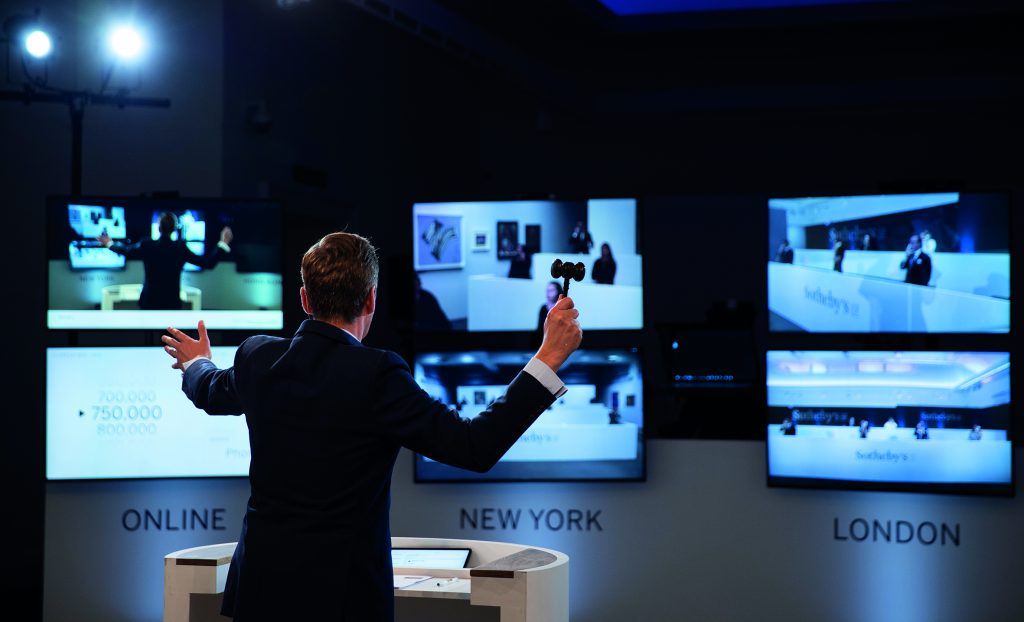
Auction houses
ArtTactic’s recent report found that leading auction house sales fell 49 per cent in the first half of 2020. This is predictable, because room auctions have been cancelled due to health and safety measures. Pi-eX also reported a 79% year-on-year drop in the combined revenue of the three major auction houses (Sotheby’s, Christie’s and Phillips) for the second quarter of this year, as compared to 2019.
Against this decline, the art auction market has been forced to innovate and embrace its novelties. Online auctions have been around for some time, and have steadily increased their reach since the beginning of the pandemic. Auction houses that have already invested in their online offeringsseem to be prepared for the shift to digital. Sotheby’s, for example, held 129 online-only sales in 2019. While only 20% of major auction house sales were conducted online in the first half of 2019, this rose to over 80% for the first half of 2020, according to data by Pi-eX Limited.
During a Rembrandt to Richter sale in July, Sotheby’s used a multi-camera global livestream format to reach an online audience of over 150,000. Employing a similar model, Christies’ One sale was relayed in sequence from Hong Kong, Paris, London and New York. Over the summer, Sotheby’s auctioneer conducted an auction from London, using video conferencing technology to communicate with bidders in real time in New York, London and Hong Kong. Purchases were announced on three screens, and over £292 million worth of art was sold without a physical audience. This type of virtual auction was the first of many to follow. COVID-19 has forced auctioneers to rethink their businesses. The past few months have accelerated a change that might otherwise have taken years to occur. This may signal the end for traditionally packed auction houses.
Sotheby’s has reported that live-streamed sales and online auctions are attracting new buyers who have never been to an auction house before. Sotheby’s confirmed that 40% of buyers are new to the auction house and 30% are under 40 years old. Technology facilitates online access, and allows collectors to examine artworks much more closely than in a pre-sale visit to a busy showroom. Christie’s, for example, is offering buyers super-zoom photography to inspect the art before bidding. Earlier this summer, a series of 15 canvases by Picasso appeared at Christie’s new cutting-edge auction platform, “ONE,” for the first time. Furthermore, as Christie’s sold a near-complete skeleton of a Tyrannosaurus rex in October 2020 for $31.8 million, a whopping 280,000 viewers tuned in to the virtual sale.
By embracing social media, and Instagram in particular, auction houses can expand their audiences at a minimal cost. For example, Brett Gorvy, an ex-sale officer at Christie’s, sold an artwork for $20 million after posting it on Instagram. Almost Immediately, he began receiving enquiries from existing clients. Living artists can also sell directly to the public without an agent. The audiences can track artwork trends, message the artist privately, and buy in less than a minute. Whilst these artworks are generally low in value, this online trading capacity vastly expands the accessibility of the art market. Furthermore, virtual art fairs can take advantage of social media platforms, enabling experiences and buying opportunities without geographic limitations.
“Sotheby’s has reported that live-streamed sales and online auctions are attracting new buyers who have never been to an auction house before.”
The Art Basel report also estimates an increase in the shares in online sales, from 10% of total sales in 2019 to 37% in the first half of 2020. Despite having the lowest share in 2019, galleries with the largest turnover showed the highest increase, with those in the $10 million-plus segment rising almost fivefold to 38%. Of those dealers reporting online sales, 26% went to new online buyers with whom the gallery had never had personal contact. New online buyers were more important for smaller galleries, accounting for 35% of the online sales of those with turnover below $250,000. The cancellation of art fairs meant that gallery sales at those venues were radically reduced in the first half of 2020, to 16% (compared to 46% in 2019). Art fair expenses are the single largest component of total costs for the galleries surveyed, (an average of 29% in 2019) a higher share than payroll or rent. The cancellation of art fairs led to a significant cost reduction.
According to a Hiscox report, online sales made up approximately 7.5% of global sales in 2019, with a growth of just 4% over the previous year. Selling art online is not new. But the public’s openness to it is. Daata, a digital platform for video and new media art, began as a commissioning site, but quickly developed into a streaming service and gallery after discovering a demand for viewing options. They even host an art fair. There have also been interesting collaborations between galleries and innovators for solutions to art market experiences. David Zwirner worked with Vortic to create virtual-reality experiences, and major auction houses relied on their digital departments to stage online-only auctions. Hauser and Wirth and Thaddeus Ropac participated in Daata’s new fair. In theory, there is little to distinguish online galleries and auctions from platforms like Saatchi Art, Etsy, and eBay. The idea is to offer a different kind of service to cultivate prestige. Furthermore, the line between auction houses and galleries has blurred. In an effort to help improve dealer visibility to action house clients, Sotheby’s launched its Dealer’s Eye sales in London and New York. Another innovative model is the platform provided by Christie’s to the exhibitors at the Paris Biennale in September. Dealers have launched their own collaborative initiatives, too. The London Collective was formed out of 40 galleries, which had originally come together for mutual support and advice through a WhatsApp group.
“Many new online-only auction houses for artworks and collectibles have intensified their activities… New art startups are also developing.”
Otis, a US-based fractional ownership company, is already using a “sneaker drop” model while launching artworks by artists such as KAWS, Murakami and Tracey Emin. This feature allows artists and galleries to collect invaluable user data and sales, leading potential collectors in return for exclusive access to time-sensitive online exhibitions, artwork, and content.
During this time, artists are also turning to online crowd-funding platforms such as Patreon to generate income. Patreon is a membership platform that provides business tools for artists and other creative types to run a subscription content service. It allows creators to earn a monthly income by providing exclusive rewards and gifts to their ‘patrons.’ Patreon reported that in the first three weeks of March, more than 30,000 creators launched pages on their site. These artist-led models have been important in keeping liquidity amongst artists by extending the ‘buyer pool’ and giving artists some initiative.
Perspectives from the Turkish art market
Although the impact of the pandemic has also been negative on the Turkish art market for all of the cited reasons above, online art auctions have gained momentum. Many new online-only auction houses for artworks and collectibles have intensified their activities. The biggest auction house of Turkey, Artam, has launched the “Buy Now” online auction, creating a major dealer-to-dealer art exchange platform which has created liquidity and further transparency in the art market. New art startups are also developing. DE ARTIUM is “a platform that has set out with the goal of spreading new media arts and digital art, aiming to create a new generation ecosystem by bringing together artists and art lovers. It is a platform where artists can exhibit their work with software and hardware integrated with new generation display systems such as LED screens, smart televisions, and VR.” The digital art rental market is a new concept for the art market. However, with the development of speedy internet connections and the expected arrival of 5G, it will boost the economic potential of art rental and screening experiences.
After being closed for about three months, galleries resumed their activities at the end of summer. Despite the health crisis, we see that the galleries made good use of the months of September and October.. They held their online exhibitions in physical spaces, albeit with a limited audience. Mamut Art exhibits the most successful new graduates in Bomontiada between October 27 and November 8, while the Base art competition organizes its exhibition in Tophane-i Amire showing the work of successful young artists between November 20 and25, as well as online. The 7th Çanakkale biennial, titled Constellation, was held between September 19 and October 19. Important works of art were exhibited from the Agah Uğur collection curated by Azra Tüzünoğlu, entitled “Unwillingly But With Pleasure.”.
This year, Artweeks Akaretler organized exhibitions with the participation of major galleries. The exhibition, which took place from October 28 until November 8, exhibited some art from private collections. Step Istanbul Art Fair took place in Taksim 360 from November 18 to 22, with about thirty galleries and limited visitors. The art fair Contemporary Istanbul will also take place in December. The fair will be held physically and online. All these examples are positive signs indicating that the production, presentation and exhibition and exchange of art has slowed, but has not halted.
Conclusion
Nonetheless, there is room for optimism. After decades of unhurried progress, the art market is now evolving at an exponential rate. Still, if the auction houses and dealers can make it attractive and stay on top of the trends, they should be able to grow and diversify their audiences in a virtual space. The art market is embracing a new world of data, transparency and efficiency, with a clear focus on online strategy.
There has been enormous progress in buyers’ openness and savviness to browsing and buying art online. The ramifications of online selling need to be considered, such as data protection laws, the potential for copyright infringement and consumer legislation. COVID-19 restrictions are boosting online sales as art lovers invest in fine art instead of overseas holidays. There is a real interest in people who stay home to buy art online. The increasing access to data and analytics may provide sophisticated buyers with more transparency and detail on potential purchases, which in turn may impact the prices that artworks can achieve at auction.
“The art market is embracing a new world of data, transparency and efficiency, with a clear focus on online strategy.”
Collectors and dealers ought to be aware of the risks that come with online transactions. When everyone is selling online; artists, collectors, auction houses, galleries, dealers, and even art stores are exposed to possible fraud.
The online art market eventually will converge around a few key players. Big galleries could emerge as new online players. The market is expected to evolve around specific collecting segments. Outsider disruption could attract the next generation of buyers. A competition from other collectible trading platforms, such as StockX, may change the speed of the race. StockX started with sneakers and now has about $100 million in annual sales, including collectibles such as KAWS and Murakami.
COVID-19 could kick-start the art world’s long-awaited digital transformation. The online art market is going through some potentially transformational changes, triggered by COVID-19 and the impact of social distancing; some of these changes are set to last. The pandemic has also exposed the extent of dependence within the art market on certain traditional sales (physical art fairs, gallery exhibitions, auctions etc.). Moreover, this health crisis has also triggered a new type of audience and buyer engagement, focusing on social causes, rather than financial gains or one’s reputation.
Resources:
https://www.ft.com/content/ff6530b4-1c40-497c-bd23-c5a70e552401
https://arttactic.com/editorial/after-jpegs-how-we-buy-art-now/
https://www.artsy.net/article/artsy-editorial-midst-covid-19-chinese-galleries-adapt-persevere
https://ubs.trickbox.live/artbasel-survey-apac
https://economictimes.indiatimes.com/industry/miscellaneous/going-going-gone-covid-19-boosts-online-art-auctions/articleshow/78729989.cms?from=mdr
https://www.artsy.net/article/artsy-editorial-insurance-buying-art-online-works
Art Basel & UBS Report ‘The Impact of COVID-19 on the Gallery Sector: A 2020 mid-year survey’ is free to read at artbasel.com
Hiscox online art trade report 2020







